| Share |  |
 | |||
Understanding Fats: The Good, the Bad and the BEST
 Fats have generally been the least understood element of our diet with many people assuming all fats are bad or unhealthy. But there is a growing realization that the low-fat diet craze that changed the way many Americans ate beginning in the mid 1980 has actually contributed to an obesity epidemic involving more than a third of all Americans. Considering fat consumption has decreased 11% in the last 20 years while obesity has risen by 32%, it stands to reason that dietary fat is not really the problem.
Fats have generally been the least understood element of our diet with many people assuming all fats are bad or unhealthy. But there is a growing realization that the low-fat diet craze that changed the way many Americans ate beginning in the mid 1980 has actually contributed to an obesity epidemic involving more than a third of all Americans. Considering fat consumption has decreased 11% in the last 20 years while obesity has risen by 32%, it stands to reason that dietary fat is not really the problem.
The real truth is that the right kind of dietary fat plays an essential role in regulating the health of every system in the body. In fact, the latest research reveals that imbalances and deficiencies of certain essential fatty acids are linked with a host of serious and commonly experienced health conditions, a subject that will be explored in greater detail here in next month's health article.
The Great Health Benefits of Fat
First, we need to better understand some basics about fats beginning with their benefits in our bodies. Besides being twice the source of energy and fuel for the body as protein or carbohydrates, fats also provide storage and transport of important fat-soluble vitamins such as vitamin A, D, E & K, function in keeping us warm, slow down absorption of food so we feel full longer, provide support and cushioning for our internal organs and keep our skin soft and moist. Certain essential fatty acids play a critical role in brain function and comprise the myelin sheaths that insulate nerve fibers and transmit information to the nervous system.
These same fats also regulate hormone-like substances that act to raise or lower a variety of metabolic functions in the body needed to maintain health. Without proper amounts of fat in the diet, protein cannot be adequately utilized nor can minerals such as calcium be absorbed. Good fats nourish and strengthen cell membranes, and are vital for cellular reproduction as well as regulation of hormones and cholesterol metabolism.
Understanding the Structure of Fats
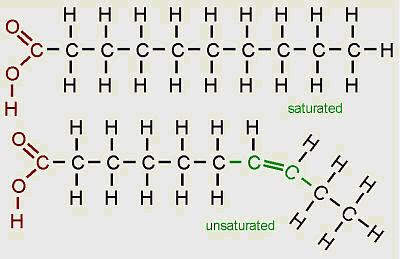 All fats are made of the same basic elements-carbon, oxygen, and hydrogen, and are classified as saturated or unsaturated depending on their structure. In order to better understand how fats work in the body to promote healthy body function and what happens on a cellular level when we consume "bad" fats, it is necessary to have a foundational knowledge of this molecular structure.
Fats are comprised of building blocks referred to as "fatty acids." Each type of fatty acid is a chain of carbon atoms classified as short, medium or long-chained according to length. It is typical for each carbon atom in the chain to be bonded to a hydrogen atom on either side. When a fatty acid has this typical arrangement, it is called "saturated," because the carbon atoms are saturated with hydrogen, i.e. every available receptor site is occupied by a hydrogen atom.
All fats are made of the same basic elements-carbon, oxygen, and hydrogen, and are classified as saturated or unsaturated depending on their structure. In order to better understand how fats work in the body to promote healthy body function and what happens on a cellular level when we consume "bad" fats, it is necessary to have a foundational knowledge of this molecular structure.
Fats are comprised of building blocks referred to as "fatty acids." Each type of fatty acid is a chain of carbon atoms classified as short, medium or long-chained according to length. It is typical for each carbon atom in the chain to be bonded to a hydrogen atom on either side. When a fatty acid has this typical arrangement, it is called "saturated," because the carbon atoms are saturated with hydrogen, i.e. every available receptor site is occupied by a hydrogen atom.
 In an "unsaturated" fatty acid, a carbon atom may instead bond to only one other hydrogen atom, and then form a double bond with a neighboring carbon atom. Structurally, a "bend" in the chain is produced in every place where a hydrogen atom is missing and a double carbon bond forms. Unsaturated fats are further divided into monounsaturated or polyunsaturated based on the number of double bonds between carbon atoms with "monounsaturated" having one bond and "polyunsaturated" having multiple bonds.
In an "unsaturated" fatty acid, a carbon atom may instead bond to only one other hydrogen atom, and then form a double bond with a neighboring carbon atom. Structurally, a "bend" in the chain is produced in every place where a hydrogen atom is missing and a double carbon bond forms. Unsaturated fats are further divided into monounsaturated or polyunsaturated based on the number of double bonds between carbon atoms with "monounsaturated" having one bond and "polyunsaturated" having multiple bonds.
Saturated Fats
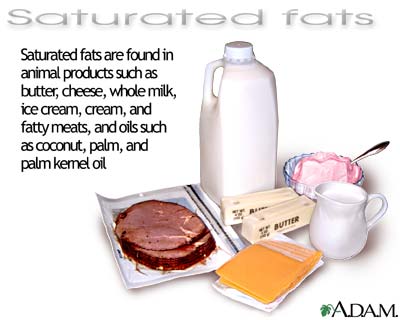 Because saturated fats have the maximum amount of hydrogen atoms that can fit within the fat molecule, they form relatively straight chains with molecules packed closely together which makes them dense and solid at room temperature. They comprise fifty percent of the cell membrane and provide its needed rigidity. Because saturated fats are the most chemically stable of the fatty acids, they can withstand cooking at higher temperatures without producing tissue damaging free radicals. Saturated fats are primarily burned for fuel to supply energy in the body and they also play a vital role in neurological function, bone health, hormone production, immune system functions, proper utilization of essential fatty acids and cell communication.
Because saturated fats have the maximum amount of hydrogen atoms that can fit within the fat molecule, they form relatively straight chains with molecules packed closely together which makes them dense and solid at room temperature. They comprise fifty percent of the cell membrane and provide its needed rigidity. Because saturated fats are the most chemically stable of the fatty acids, they can withstand cooking at higher temperatures without producing tissue damaging free radicals. Saturated fats are primarily burned for fuel to supply energy in the body and they also play a vital role in neurological function, bone health, hormone production, immune system functions, proper utilization of essential fatty acids and cell communication.
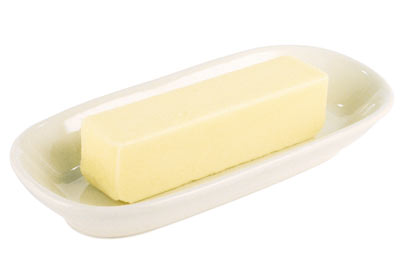 Most foods high in saturated fat are from animal sources such as meat and dairy products though a few come from plants such as coconut and palm oil. Since pesticides, hormones, medications and other toxins are concentrated in an animal's fat, it is good to cut off the fat if you are eating conventionally raised poultry and meat as opposed to organic meat from animals that are pasture fed and not medicated. Though saturated fats do contain cholesterol and should be consumed in moderation, recent studies have verified that dietary saturated fats do not raise LDL cholesterol (the so-called "bad cholesterol") nor have low-saturated fat diets been shown to decrease heart disease or mortality. Honest evaluation of scientific evidence reveals only about a fourth of fat from clogged arteries is saturated.
Most foods high in saturated fat are from animal sources such as meat and dairy products though a few come from plants such as coconut and palm oil. Since pesticides, hormones, medications and other toxins are concentrated in an animal's fat, it is good to cut off the fat if you are eating conventionally raised poultry and meat as opposed to organic meat from animals that are pasture fed and not medicated. Though saturated fats do contain cholesterol and should be consumed in moderation, recent studies have verified that dietary saturated fats do not raise LDL cholesterol (the so-called "bad cholesterol") nor have low-saturated fat diets been shown to decrease heart disease or mortality. Honest evaluation of scientific evidence reveals only about a fourth of fat from clogged arteries is saturated.
Two Types of Unsaturated Fats
Monounsaturated Fats:
The most common form of monounsaturated fats is called oleic acid and it is found in such things as olives, olive oil, avocado, peanuts and various nuts like almonds, pecans, macadamia, and hazelnuts. Like saturated fats, monounsaturated fats are relatively stable. These fats are liquid at room temperature but solidify at cold temperatures and are known for being particularly high in the beneficial antioxidant Vitamin E. Oils made from monounsaturated fat sources are best used in things like dressings and spreads and for lower heat cooking.
Polyunsaturated Fats:
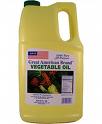 Polyunsaturated fats have less hydrogen atoms and even more "bends" in the chain, which does not allow them to pack closely together due to the irregularly shaped molecular structure. This makes the cell membrane more flexible and permeable, which allows nutrients to enter the cell and leave waste products. It also means these fats are fluid at both room temperature and when refrigerated or frozen. Because their double carbon bonds break apart so easily, polyunsaturated fats are very subject to chain reactions of free radical damage, a process referred to as "lipid per-oxidation," directly linked with artherosclerosis and coronary heart disease.
Polyunsaturated fats have less hydrogen atoms and even more "bends" in the chain, which does not allow them to pack closely together due to the irregularly shaped molecular structure. This makes the cell membrane more flexible and permeable, which allows nutrients to enter the cell and leave waste products. It also means these fats are fluid at both room temperature and when refrigerated or frozen. Because their double carbon bonds break apart so easily, polyunsaturated fats are very subject to chain reactions of free radical damage, a process referred to as "lipid per-oxidation," directly linked with artherosclerosis and coronary heart disease.
Polyunsaturated fats also turn rancid easier than saturated fats and are not as stable for cooking at high temperatures (see article on cooking oils under "Healthy Cooking Tips"). Derived from the unsaturated fatty acids of vegetables, seeds or nuts, polyunsaturated fats are found in refined oils such as corn, safflower, sunflower, soybean, cottonseed, and sesame seeds oils as well as such things as mayonnaise and salad dressings.
Omega Essential Fatty Acids
The two main types of polyunsaturated fats are omega-3 fats and omega-6 fats, which are essential fatty acids (EFAs), meaning the body cannot manufacture them and they must be obtained from the diet or supplementation. The main Omega 3 EFA is alpha-linolenic acid (ALA), which has the capacity of being converted to Eicosapentaenoic acid (EPA) and Docasahexaenoic acid (DHA). It is found in foods such as coldwater fish, cod liver oil, flaxseeds and walnuts.
Linoleic acid is the main Omega 6 EFA and it can be converted to Gamma-linolenic acid (GLA) from which Di-homo-gamma-linolenic acid (DGLA) and Arachidonic acid (AA) may be formed. It is found primarily in vegetable oils such as corn, sunflower and safflower oil. Though these long names (which are just Greek words for the position of the carbon bonds in the fatty acid structure) are not important to know, the presence and proper balance of these essential fatty acids play a critical role in regulating key functions of the body directly related to many of today's health challenges as will be more clearly explained in next month's article.
Man-Made Fats Added to the Mix
 Around the turn of the 20th century, another category of fats was created; the use of which substantially increased during WWII, when butter was scarce and margarine use soared. Hydrogenated or "trans fats" became very popular as they significantly improved the shelf life, texture and flavor stability of processed foods and had a higher melting point than other fats.
Around the turn of the 20th century, another category of fats was created; the use of which substantially increased during WWII, when butter was scarce and margarine use soared. Hydrogenated or "trans fats" became very popular as they significantly improved the shelf life, texture and flavor stability of processed foods and had a higher melting point than other fats.
These fats are artificially produced through a chemical process in which cheaper vegetable oils such as corn, soy or cottonseed are mixed with nickel oxide as a catalyst and heated to high temperatures. Hydrogen atoms are then forced through the oil to the point of saturation, forming a solid fat or semi solid fat in the case of partially hydrogenated oil. This process permanently reconfigures the structure of the fat molecules into a form not found in nature, making them straight where they normally would be bent. A stiff and ineffectual cell structure with decreased fluidity is the result.
Though its chemical signature is the same, this altered structure cannot be read by the body and, unfortunately, is incorporated into the cell membrane as a normally configured unsaturated fatty acid. Because cell communication can only take place when cell membranes are in particular molecular arrangements, cell metabolism and function is severely disrupted by these "fake" fats. When we take into our body that which has been chemically and structurally altered by man, it can have destructive consequences to our health as God designed our cells to function using unaltered whole food sources in their natural state.
Dangers of Trans Fats
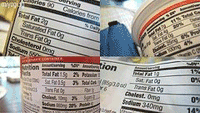 Trans fats are particularly dangerous for heart health as they increase levels of triglycerides thought to be responsible for blood clots that form and block arteries. They also increase levels of C-reactive protein known to cause inflammation of blood vessels, another major cause of heart disease. They both raise LDL cholesterol levels and lower HDL cholesterol levels. A study of some 80,000 women, conducted by Harvard Medical School and the Brigham and Women's Hospital in Massachusetts, showed only a two percent increase in trans fats elevated risk of heart disease ninety-three percent! Trans fats have also been shown to diminish immune system response, increase cancer risk factors, increase insulin resistance, and interfere with utilization of essential omega-3 fatty acids.
Trans fats are particularly dangerous for heart health as they increase levels of triglycerides thought to be responsible for blood clots that form and block arteries. They also increase levels of C-reactive protein known to cause inflammation of blood vessels, another major cause of heart disease. They both raise LDL cholesterol levels and lower HDL cholesterol levels. A study of some 80,000 women, conducted by Harvard Medical School and the Brigham and Women's Hospital in Massachusetts, showed only a two percent increase in trans fats elevated risk of heart disease ninety-three percent! Trans fats have also been shown to diminish immune system response, increase cancer risk factors, increase insulin resistance, and interfere with utilization of essential omega-3 fatty acids.
 People were not as aware of the extensiveness of trans fats use or their harmful effects on health until 2006, when a law was passed requiring trans fat disclosure on nutrition labels. Although small amounts of trans fat occur naturally in some meat and dairy products, it's the trans fats in processed foods that make up forty percent of grocery store items that are the most harmful. Here are just some of the snack and fast food items commonly eaten by people that may contain trans fat:
People were not as aware of the extensiveness of trans fats use or their harmful effects on health until 2006, when a law was passed requiring trans fat disclosure on nutrition labels. Although small amounts of trans fat occur naturally in some meat and dairy products, it's the trans fats in processed foods that make up forty percent of grocery store items that are the most harmful. Here are just some of the snack and fast food items commonly eaten by people that may contain trans fat:
- Donuts
- Crackers
- Fried Chicken
- Vegetable Shortening
- Muffins
- Candy
- Fried Fish
- Stick Margarines
- Pastries
- Cookies
- French Fries
- Processed peanut butter
- Canned biscuits
- Cakes & icing
- Microwave popcorn
- Instant coffee beverages
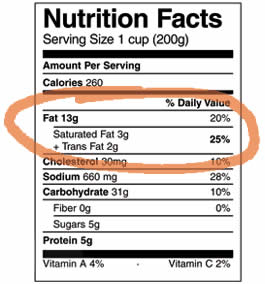 Do not be fooled by "Zero Grams Trans Fats" written on the front of the package label as labeling laws only require listing trans fat grams above 0.5 grams per serving. Because the percentage on the label is the percentage that the food's "Standard Serving Size" represents in a 2,000 calorie diet, the food product can still contain up to 2.2 grams of trans fat in its "standard serving" and yet claim zero percent.
Do not be fooled by "Zero Grams Trans Fats" written on the front of the package label as labeling laws only require listing trans fat grams above 0.5 grams per serving. Because the percentage on the label is the percentage that the food's "Standard Serving Size" represents in a 2,000 calorie diet, the food product can still contain up to 2.2 grams of trans fat in its "standard serving" and yet claim zero percent.
Remember, there are no "safe levels" of trans fats and only one way to know that a product does not have them. You must carefully read the labels and make sure they do not have any ingredients labeled: "hydrogenated," "partially hydrogenated," "mono-diglycerides," "vegetable oil," or "shortening" as those foods DO contain trans fats.
In next month's article, we will examine more specifically the ways in which the essential fatty acids, particularly Omega 3's, affect both the cause and cure of many health conditions people experience today. You will also learn about how consuming the "best" fats can protect and improve your health and quality of life for years to come.
Copyright © 2008-2015 Lucinda Bedogne, CNHP, CNC
Post Your Comment...
|
|
||||||||||||


